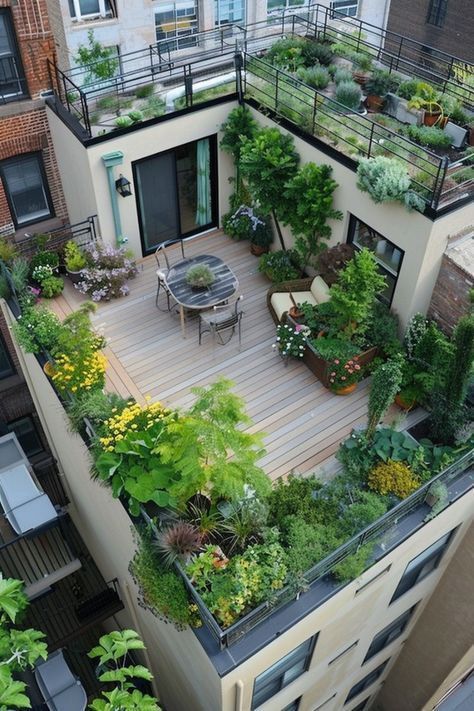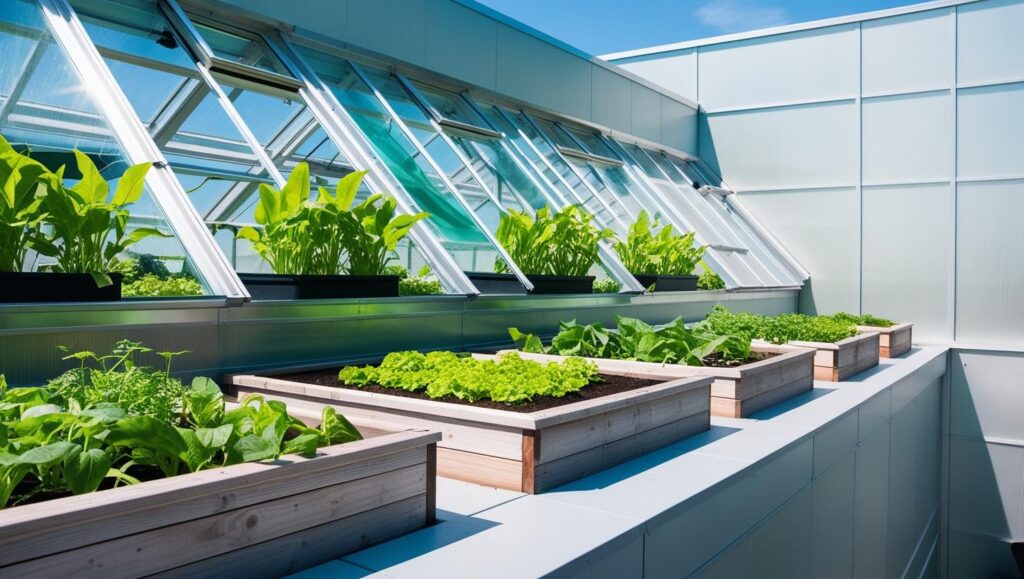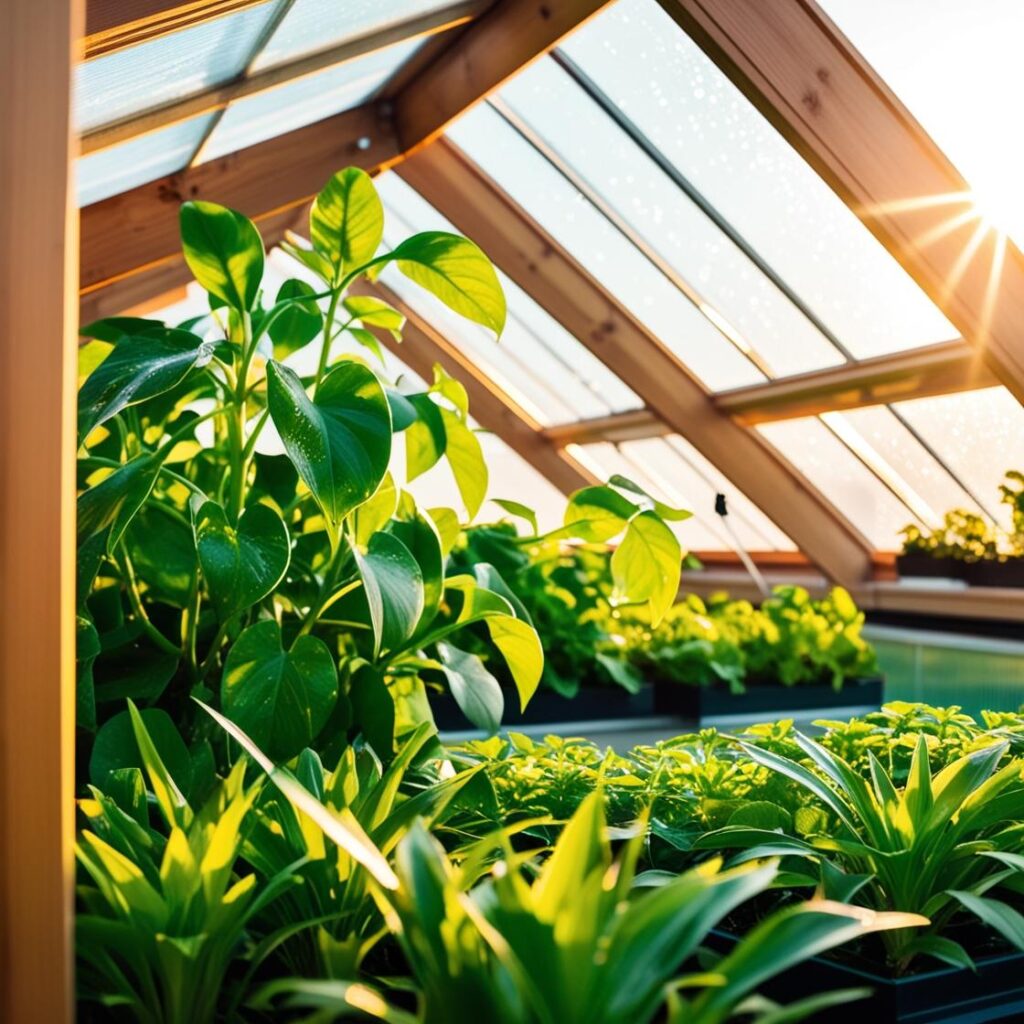A rooftop that is covered with soil vegetation and a waterproofing system intended to support plant life is known as a green roof. . Green roofs use soil drainage and vegetation layers to create a natural environmentally friendly surface in place of more conventional roofing materials like shingles or tiles. They are classified as either intensive or extensive. The former are lightweight and low maintenance while the latter are more akin to rooftop gardens and feature larger plants and deeper soil. A rooftop greenhouse may seem ideal, but its high cost and structural challenges make the rooftop greenhouse disadvantages worth considering.
In addition to improving air quality and absorbing rainwater, green roofs also help cool cities. They also help to maintain the temperature inside by producing a natural layer of insulation. Green roofs do have many advantages but there are some rooftop greenhouse disadvantages like, expenses, upkeep issues and structural needs that should be carefully considered.
Green Roof Cost
Factors such as size type and upkeep needs affect how much a green roof costs. Heres a summary.
1. Costs of Installation
Large low-maintenance green roofs range in price from $10 to $25 per square foot. Costs for intensive green roofs (more plants deeper soil) range from $25 to $50 per square foot.
2. Upkeep Expenses
The annual cost of routine maintenance (watering, fertilizing and plant replacement) ranges from $0 to $1. 75 per square foot.
3. Structural Costs
To support the weight of a green roof older buildings might require reinforcement which would increase the project’s cost by thousands of dollars.
4. Additional Costs
While they are more expensive, waterproofing membranes, drainage layers and irrigation systems are necessary for long-term sustainability.
Despite the initial cost green roofs save money over time by lowering energy costs prolonging the life of the roof and raising property values.
Green Roof Problems
Rooftop Greenhouse Disadvantages makes you think before installing it. Green roofs present a number of difficulties in spite of their advantages:
- High Initial Cost: Compared to traditional roofing the installation costs are higher.
- Structural Support Needed: Some buildings might not be able to sustain the additional weight so structural support is required.
- Continuous Care: Green roofs need to be watered, weeded and replanted every so often.
- Problems with drainage: Water damage and leaks can result from improper drainage.
- Limited Accessibility: Maintaining certain green roofs can be challenging due to their inaccessibility.

Advantages and Disadvantages of a Rooftop Greenhouse
A rooftop greenhouse may seem ideal as well as its high cost and structural challenges make the rooftop greenhouse disadvantages worth considering. Rooftop Greenhouse Disadvantages makes you think before installing it.
Green Roof Benefits
Green roofs provide several social economic and environmental advantages making them more than just a trendy architectural element. The following are some major benefits.
1. Improved Insulation
The natural insulation property of green roofs allows buildings to maintain higher interior temperatures during winter and lower summer temperatures. The energy expenses decrease when heating and cooling demands become lower.
2. Stormwater Management
By collecting rainfall green roofs lessen runoff and keep cities from flooding. Prior to rainwater entering drainage systems they also aid in filtering pollutants from it.
3. Better Air Quality
By absorbing dust pollutants and carbon dioxide plants on green roofs enhance air quality and foster a healthier atmosphere.
4. Extended Roof Lifespan
A green roof prolongs the life of the roofs underlying materials by shielding them from harsh weather, UV radiation and temperature changes.
5. Urban Heat Reduction
By cooling urban environments green roofs mitigate the urban heat island effect and improve comfort in hot weather.
6. Aesthetic Appeal
Particularly in urban settings with little access to nature they add aesthetic value to buildings and offer a tranquil green area.
Benefits of Green Roofs in Urban Areas
Problems in urban areas include high temperatures, a lack of green spaces and pollution. The following are some ways that green roofs aid in the resolution of these issues:
- They function as a sound barrier lowering noise pollution.
- Through the provision of habitat for insects and birds they enhance biodiversity.
- They designate communal areas for social gatherings, leisure and urban farming.
- Through bringing nature closer to urban dwellers they enhance mental health.

Rooftop Greenhouse Disadvantages
A rooftop greenhouse is a building designed to cultivate plants in a regulated setting. Fresh produce and sustainability are benefits but there are drawbacks as well. Rooftop Greenhouse Disadvantages makes you think before installing it.
1. Expensive Construction
High expenses are associated with rooftop greenhouse construction because dedicated insulation and ventilation systems are required. The total cost of rooftop greenhouse constructions varies between $100 and $300 based on structure design.
2. Structural Limitations
The additional weight of a greenhouse is too much for some buildings and adding reinforcements can cost thousands of dollars.
3. Temperature Control Challenges
Significant temperature swings in a rooftop greenhouse necessitate continuous climate control which raises energy expenses.
4. Water Supply Issues
Greenhouses require continuous watering and additional irrigation systems may be necessary due to the complexity of rooftop water access.
5. Maintenance and Labor-Intensive
Because rooftop greenhouses are exposed to wind and weather and have accessibility issues they are more difficult to maintain than ground-level greenhouses.

3 Major Disadvantages of Rooftop Greenhouses
Before spending money on a rooftop greenhouse take into account these three major disadvantages.
- Expensive Installation: Installing a greenhouse is expensive because it requires structural changes and special materials which raises the initial cost considerably compared to a traditional greenhouse.
- Structural Limitations: Some buildings are unable to sustain the additional weight and expensive reinforcements are frequently needed.
- Complex Climate Control: Temperature variations can stunt plant growth if insulation and ventilation are inadequate.
FAQs
Q: What are the disadvantages of green roofs?
A: Green roofs are costly, need constant upkeep and might require extra structural support.
Q: What are the 5 disadvantages of a greenhouse?
A: A greenhouse’s high maintenance, requirements for climate control, pest issues and dependable water supply make it expensive.
Q: What are the problems with rooftop gardens?
A: Difficulties with accessibility, drainage, high expenses and structural constraints.
Q: What are the pros and cons of roof gardens?
A: Better air quality insulation and aesthetics are advantages, high expenses upkeep and structural needs are disadvantages.
The Truth About Rooftop Greenhouse Disadvantages
A rooftop greenhouse may seem ideal, but its high cost and structural challenges make the rooftop greenhouse disadvantages worth considering. Fresh produce can be grown sustainably with rooftop greenhouses but they are expensive and structurally complex and require a lot of upkeep. It’s crucial to think about the long-term costs and useful restrictions before making an investment to determine whether it will work well in your area.
For a simple and fashionable update see 10 Unexpected Ways an Olive Green Rug Can Change Your Home if you’re searching for a simpler way to update your space!.
